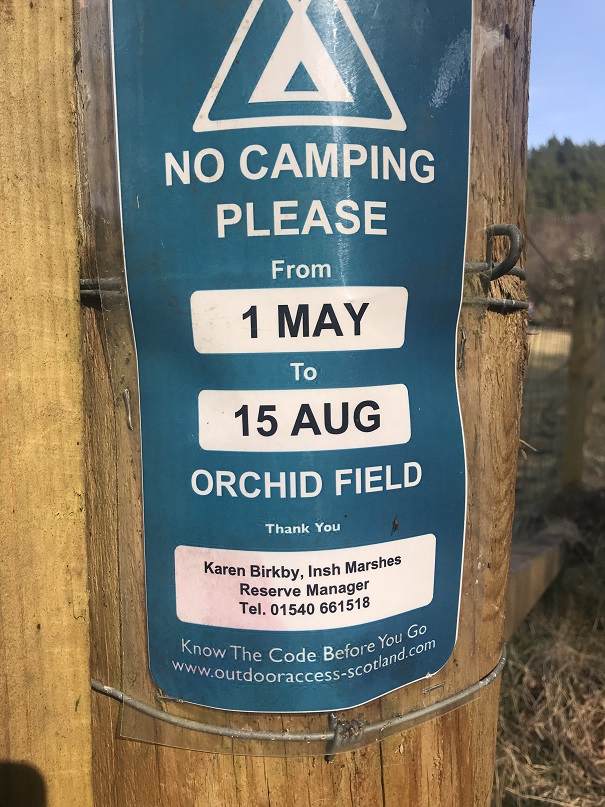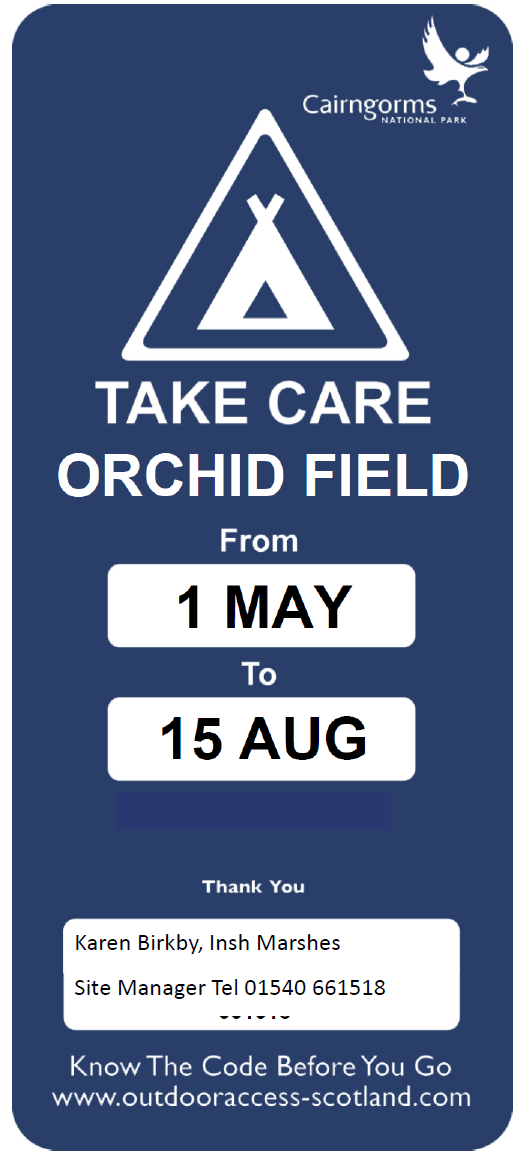
Just over a week ago Cameron McNeish sent me this photo of a sign he had come across while walking on the RSPB Nature Reserve at Loch Insh near Tromie Bridge in the Cairngorms National Park. The sign was clearly against the Scottish Outdoor Access Code – and in breach of our access legislation – because, while it had the merit of including dates, instead of explaining how people could behave responsibly it simply said NO camping. It was thus unlawful.
Certain orchid and other plant species may need protecting but these are as likely to be trampled by walkers or children playing in fields as crushed by tents so why single out campers? And, if there really is nowhere in the field where it would be possible to pitch a tent without crushing the orchids, the positive way to address this would either be to direct people to a particular part of the field to limit the damage or to suggest alternatives. The sign did none of these things.
Cameron contacted the RSPB Reserve Manager and its to her – and the RSPB’s – absolute credit that within hours of being contacted she had agreed to change the sign to this:
 The great thing about this sign is it applies to everyone, rather than singling out campers, and reinforces the whole ethos behind the Scottish Outdoor Access Code which is about people taking personal responsibility for their actions. Its a sign which I hope will make people think about where they tread, sit down or camp.
The great thing about this sign is it applies to everyone, rather than singling out campers, and reinforces the whole ethos behind the Scottish Outdoor Access Code which is about people taking personal responsibility for their actions. Its a sign which I hope will make people think about where they tread, sit down or camp.
So, well done Cameron for challenging the sign – an example to us all – and well done Karen for listening and setting such a good example for other land managers to follow.
This case though raises a couple of broader questions about access in our National Parks:
- why, when this sign has been changed so quickly, do our National Park Authorities find it so difficult to remove other signs which breach the Scottish Outdoor Access Code (see here) and (here)?
- why too, does the Cairngorms National Park Authority let landowners – as in this case – use its logo on anti-access signs thus giving the impression that signs have been officially approved?

As a local resident in the Cairngorm National Park the plethora of anti access signs are like the poor. Forever with us ! In my experience the tendency of local estates is also to replace old fencing which did include pedestrian access with designs which now do not. Invariably with locked gates. Perhaps trainee SOE agents can get over them, many members of the public cannot (sorry BBC)
The other common strategy is dangerous livestock. I often feel that I must be living on a cattle ranch. Signs proclaiming the presence of potentially dangerous cattle, bulls in particular abound. Clearly responsible farmers take care to properly warn the public of the presence of cattle. However this begs a legal question where such signs are permanent but the cattle are rarely or indeed never in the posted area. Year round warnings of deer stocking and shooting are equally suspect.
Please keep up the good work. Parkwatch is playing a crucial role in Acess Rights.